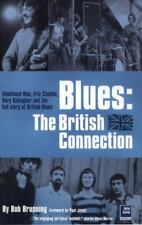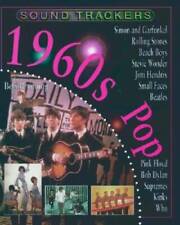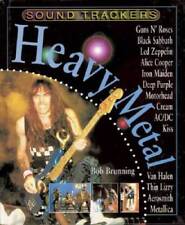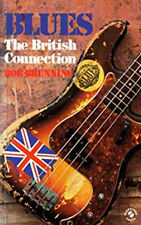|
Guitar Player, Profile: Rick Vito Guitar Player, May 1992 Profile: Rick Vito
By Jas Obrecht Rick Vito's King of Hearts delivers soulful vocals, superb rhythms, and the masterful whine of metal sliding upon metal. While drenched in blues, Vito's solos - especially on slide - are fresh, thrilling rides, following roadmaps of his own design. It speaks of a long journey: "That's everything I was trying to achieve, everything that I hoped someone would pick up on," he exclaims. "My whole life has been a quest for the blues. How do you remain true to the music you really respect, admire, and love, and express that in an original way in the modern world? I've always been conscious of this when writing songs and trying to develop a style." Born and raised in Philadelphia, Vito moved to Los Angeles a couple of decades ago, joined Delaney & Bonnie and then went on to play behind Bobby Whitlock, Little Richard, John Mayall, Maria Muldaur, Roger McGuinn, Bonnie Raitt, Jackson Browne, and Bob Seger. He replaced Lindsey Buckingham in Fleetwood Mac in '88, contributing songs and earthy 6-string to Behind the Mask. He called it quits last fall and is now focused on his solo career. Not all of Vito's considerable finesse is relegated to slide: The cool rhythms and torrid solos of "I'll Never Leave This Love Alive" are heartrending, while "Poor Souls In Love" prays with power riffs and spaghetti-western tones. His classy instrumental "Walking With The Deco Man: dances the fine line between swing and shuffle. "Man, I'm a student of the shuffle," Vito says. "There are so many different kinds on the old records where it came out of the swing and started into R&B. And then Chuck Berry added a little bit more of a quarter-note feel. Even on 'Johnny B. Goode,' the drummer is playing a shuffle while Chuck Berry is laying down quarter-notes. 'Jam Up,' a 1954 record by Tommy Ridgley out of New Orleans, is a great, great shuffle tune. That Amos Milburn shuffle coming out of boogie-woogie was really cool. Listen to Muddy Waters with Jimmy Rogers on guitar in the '50s - those shuffles are fabulous. I certainly liked the way Stevie Ray Vaughan did the Texas shuffle, which is basically coming out of that Junior Parker-Bobby Bland, Duke Records scene. Albert Collins is a master shuffle guy." Given his heavyweight credentials, Vito could have easily packed King of Hearts with guest stars. But aside from sharing vocals with former Mac-mate Stevie Nicks on two tracks, he stands alone: "The obvious thing would have been to do an L.A. record and have as many high-profile people on it as possible. But I wanted to remain true to myself - the record was meant to be a personal thing. I wound up playing bass on seven tracks and doing all the guitars. I started off cutting some of the stuff in L.A. at a friend's home studio, and then I went to Memphis and worked with Terry Manning, who's engineered for ZZ Top. I wanted an engineer/producer, as opposed to somebody who's going to mold me into what his idea was. And, if possible, I wanted that Memphis feel." Vito designed three of the guitars heard on King Of Hearts, submitting full-scale drawings to Iuthier Toru Nittono at L.A. Guitar Works. "Basically I wanted a guitar that looked different. I'm a real art-deco nut, and the guitars are an extension of what I like to look at. Luckily I found somebody who could build them exactly the way I wanted." A two-humbucker model appears on "I Still Have My Guitar" and "Two Hearts On Fire," while other tracks feature guitars configured like a Strat or Les Paul Junior. More designs are in the works. Rick plays slide with Sears Craftsman sockets - a 5/8th, a padded 11/16th, or a 5mm - and a variety of amps. "One of my favorite setups is my '56 Les Paul Junior through a 100-watt Dumble amp, which always gets good sound, or a Deluxe Reverb. The trick is getting that overdrive that sweetens up a lot. I normally set the overdrive and the volume at about halfway - it all depends on the song. The more overdrive you stick on, the thinner the sound gets, unless you really mess with the tones and cut off a lot of the highs." He sometimes dialed in echo and reverb from his Roland GP-8. Other times - "Honey Love," for instance - he relied on a trick that harmonica players have used for decades: "Crappy amps," he confides. "Something magical happens when you turn up those small amplifiers - like my Atlas Beaux Arts, which gets that sweet overdrive when it's turned all the way up. I'm a big fan of that sound. You get one of those little amps with the crappy-sounding paper speaker, overdrive it, throw a little reverb on it, and it turns into a half-saxophone. Robert Stamps of The Amp Shop in Reseda, California, built me a cool amp out of an old radio - that's my secret sound. "I always try to keep myself from playing a certain way. Everybody sounds like Duane Allman or George Thorogood playing in E tuning, and I don't want to do that rock and roll, overdone, open-tuning slide thing. That's why a lot of my songs are done in regular tuning. You just play the notes you'd normally play fingerstyle, but on slide it comes out very expressive. I've never been concerned with playing a flurry of notes in every solo. I'd rather go slow and see how much emotion I can drag out of the thing." Besides the solo album, the purest expressions of Vito's emotion can be heard on John Mayall's New Year, New Band, New Company, Jackson Browne's Lawyers In Love, and Fleetwood Mac's Behind the Mask and "As Long As You Follow" on Greatest Hits. He also points to "Like A Rock," a nationwide selection from Bob Seger's album of the same name. "That had a lot of stretching out on slide. Right now they're using it all over the place in a Chevy commercial." King of Hearts is on Modern/Atlantic. Thanks to Rick Vito for sending this to the Penguin, Les for posting it to the Ledge and to Anusha for formatting and sending it to us.
|








